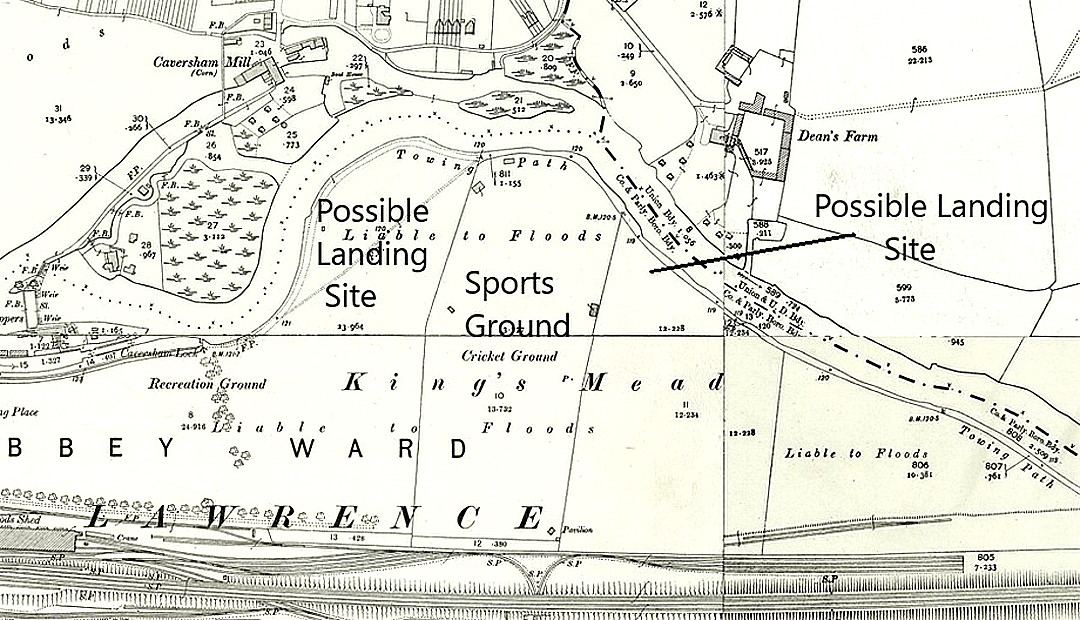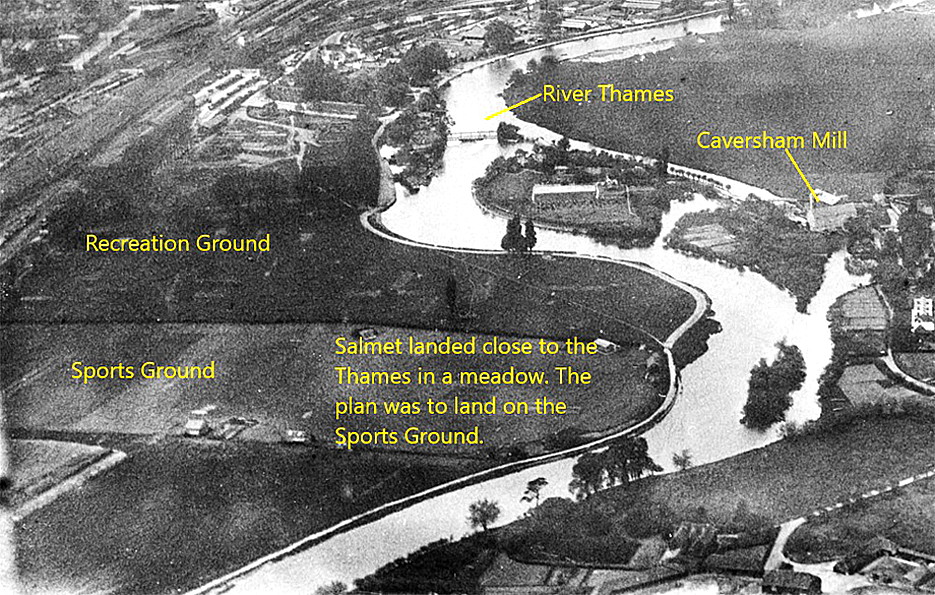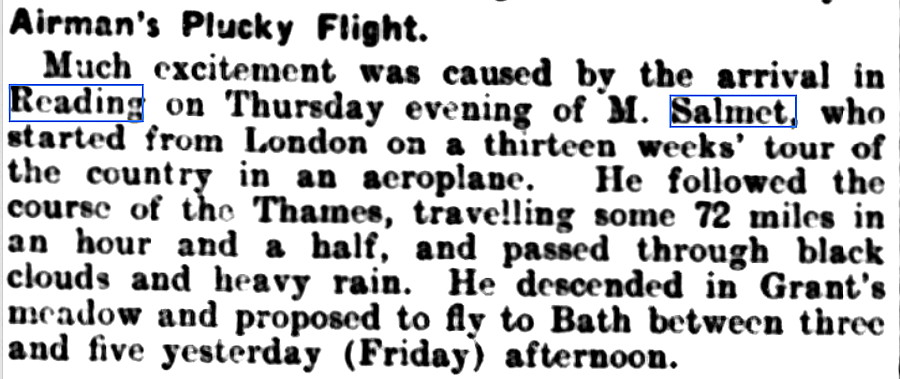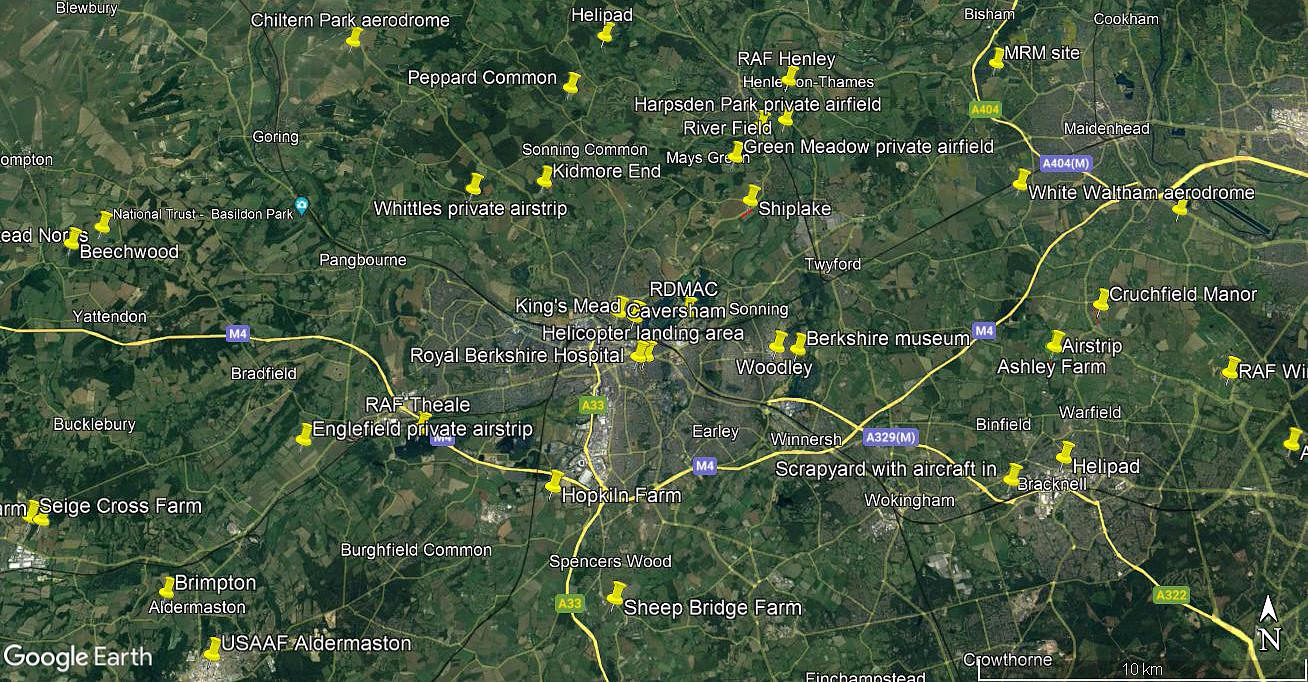Kings Mead
KING'S MEAD: Temporary Landing Ground
Location: Just S of the River Thames, just NE of Reading town centre
Period of operation: 16th to 17th May 1912
In 1912 the Daily Mail sponsored six aviators, (as pilots were then called), to conduct 'exhibitions of flying' - around the UK, mainly in England. Two of them, the then very famous French aviator Henri Salmet, and the equally famous British aviator Claude Grahame-White, conducted extensive tours, the latter being known as the 'Wake Up England' tour.
In Salmet's case he had 'Daily Mail' painted on the underside of his wings. He commenced his Tour from WORMWOOD SCRUBBS in west London, his departure being delayed by high winds until the evening. It appears his original intention was to fly directly to his first planned venue at Reading, but for some reason which we have yet to ascertain, decided to make a diversion or precautionary landing at Taplow. However, he didn't stay here very long, and soon after took-off again to reach Reading before nightfall.
We need to remember that in 1912 powered aviation was still in its infancy, it only commencing in the UK in 1909, although the French by this time were already well advanced. Even so, aerial navigation techniques were rudimentary at best, and following line features was the often preferred method, and railways were especially useful. For this first stage, in the previous century, a thoughtful British engineer, Isambard Kingdom Brunel, had provided Salmet with an ideal line feature - the Great Western Railway. Which starts from Paddington and routes quite close to WORMWOOD SCRUBBS.
Indeed, before the arrival of GPS Sat-Nav, most private pilots using aviation charts usually also used similar techniques, relying on ground features. More advanced pilots often flew under IFR (Instrument Flight Rules), but most of us flew under IFR, R & R rules = 'I Follow Roads, Rivers and Railways'. Just as Salmet had. Indeed, prior to WW2, even commercial airline pilots and their navigators often relied heavily on these back to basics techniques.
A MICHAEL T HOLDER GALLERY
Note: This second item was published in The Scotsman on the 17th May 1912.
Note: This fourth item was published in the Reading Standard on the 18th May 1912.
What is of interest is the reporter of the Reading Standard stating that Salmet had followed the River Thames. Clearly this individual had no idea whatsoever of the path of Thames from central London to Reading. Meandering well into Surrey via Hampton Court, Sunbury and Chertsey, it would have been utter stupidity. And Salmet was no fool. During research into this Tour, by and large, the newspaper reports do appear to be very well told, matching up very well with the evidence.
Note: The article in Flight magazine was published on the 25th May 1912. The area view is from my Google Earth © derived database.
What also caught my interest was Salmet deciding, according to the article in Flight magazine, not to land in the selected venue, the Sports Ground, but choosing a nearby site due to "remous". This is a French word meaning swirl, so in effect, without too much doubt, describing what we today call rotor effect, usually created in the lee of large buildings and, more usually behind long stands of trees. I was most surprised that Salmet, in those days, was even aware of this.
Basically the wind creates a circular situation in which, very locally, a headwind very quickly becomes a tailwind - strong enough to prevent an aeroplane from flying - it suddenly dropping like a stone. I can well remember two instances when this happened to me. Fortunately in both cases flying a Cessna 172, which with its very forgiving 'Land-a-Matic' main undercarriage, prevented sustaining any damage.
The first example being coming into land at Bromma 'airport' in Stockholm with a very long runway. Aiming to land close to the taxiway leading to the flying school, when just getting ready to flare for landing, it simply dropped onto the runway and bounced. Adding a large amount of power I then made a respectable landing. The locals were much amused. "How many landings was that?" Just one I replied, the first was a crash.
The second example was at POPHAM in Hampshire. That time, dropping from a slightly greater height, I gunned the engine, hauled back on the yoke, and, more by luck than judgement, made a very smooth landing. My passenger, who had never flown before in a light aircraft was most impressed. On checking in I was asked to look at the three windsocks - they were all pointing in different directions!
For Salmet of course, such conditions were very hazardous. FIrstly because his rotary engine had just two settings - full power and off. So in effect all landings were made after a glide approach with the engine stopped. Also, the undercarriage had almost no suspension, so a very heavy landing would, in all probability, have resulted in serous damage.
We'd love to hear from you, so please scroll down to leave a comment!
Leave a comment ...
Copyright (c) UK Airfield Guide
























